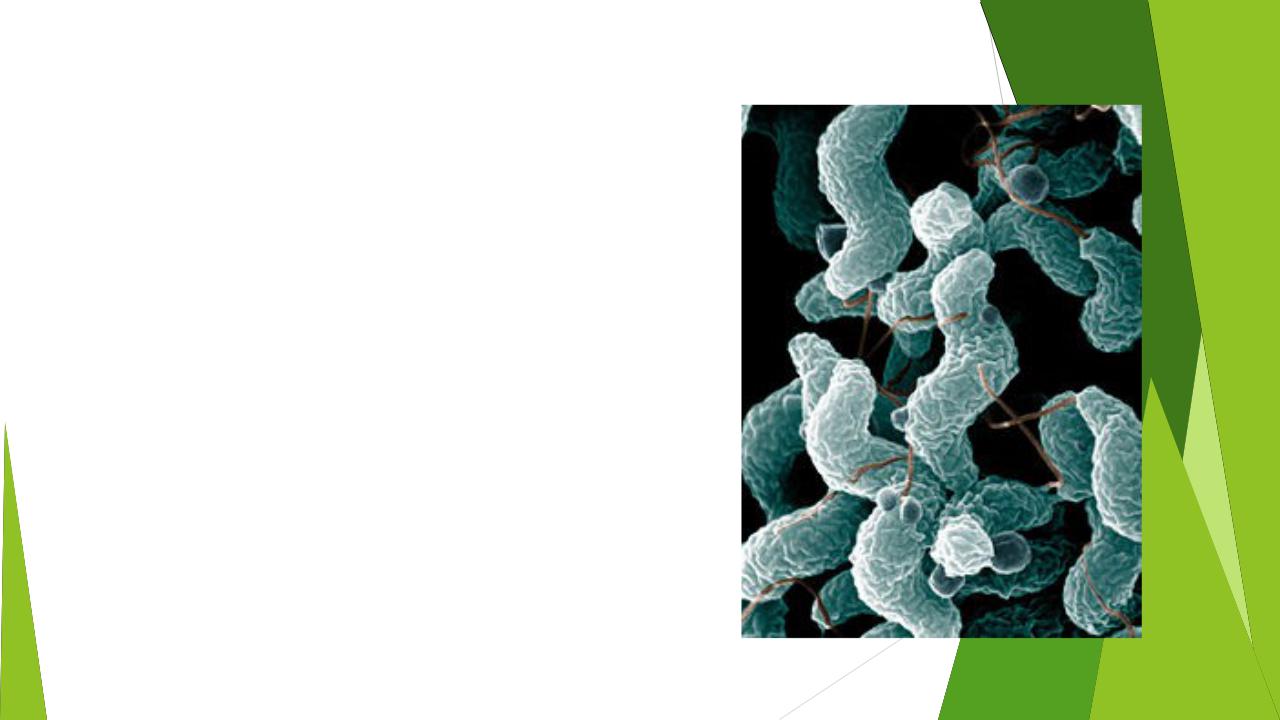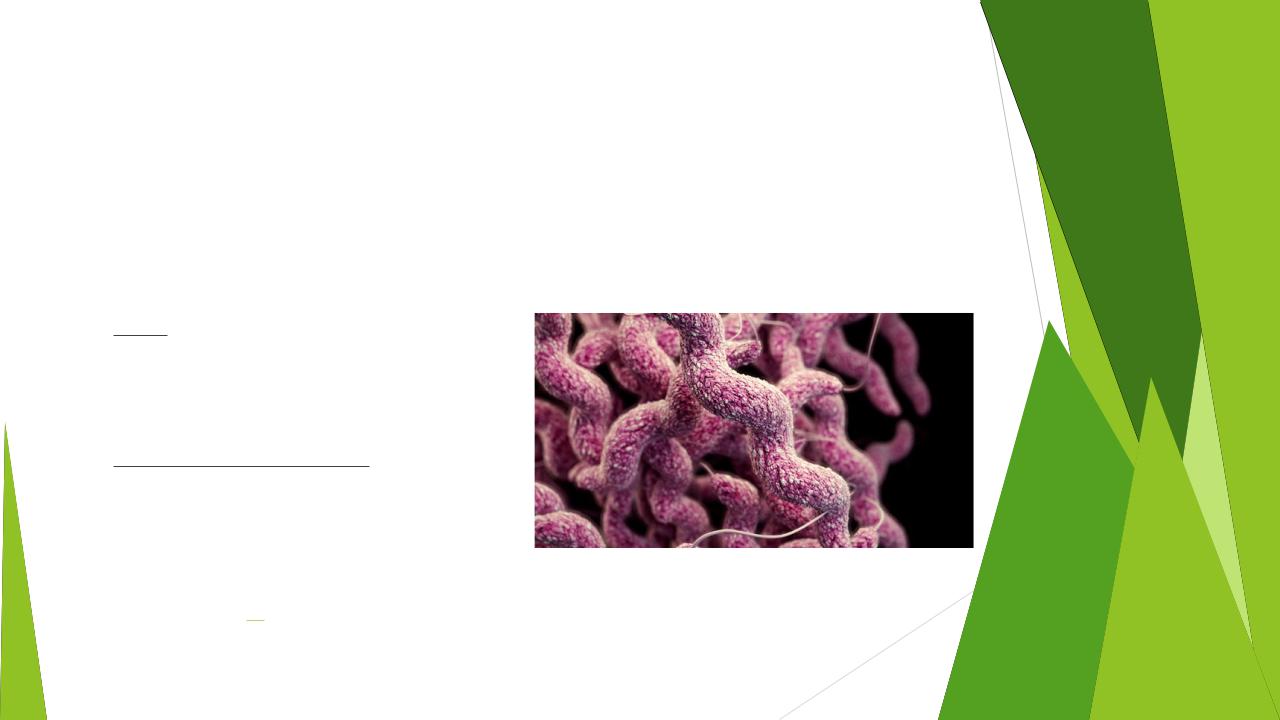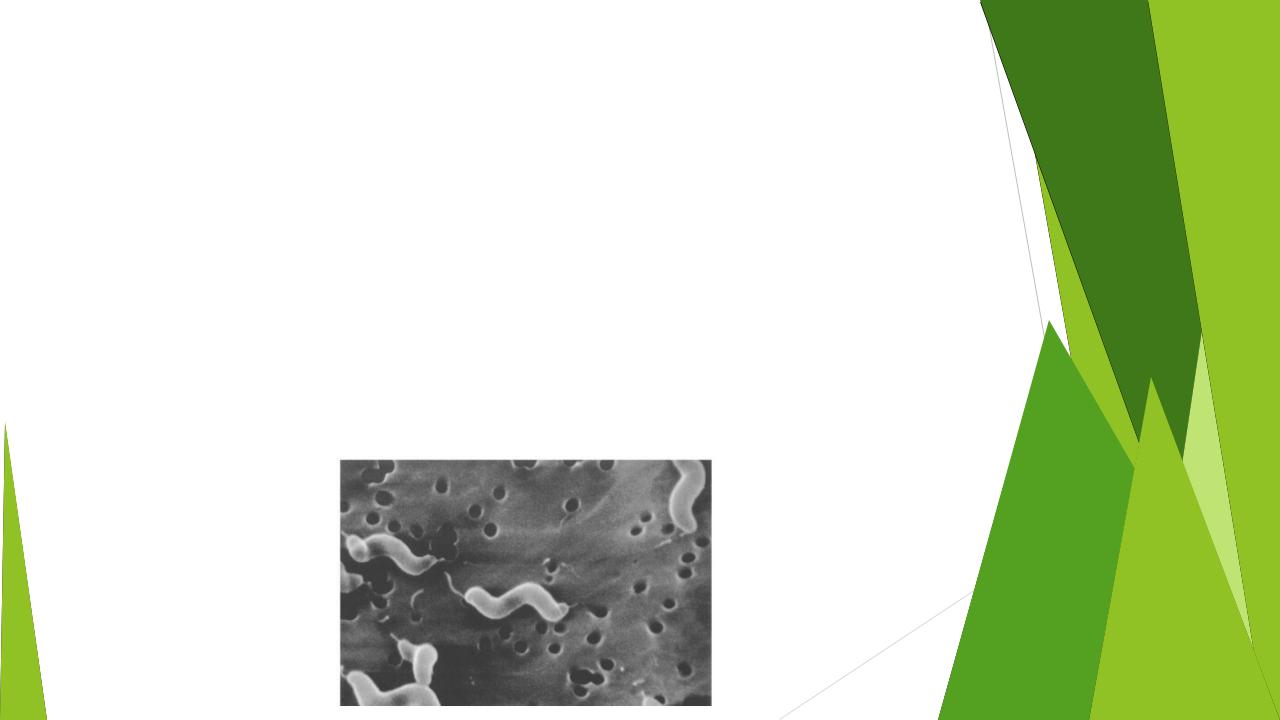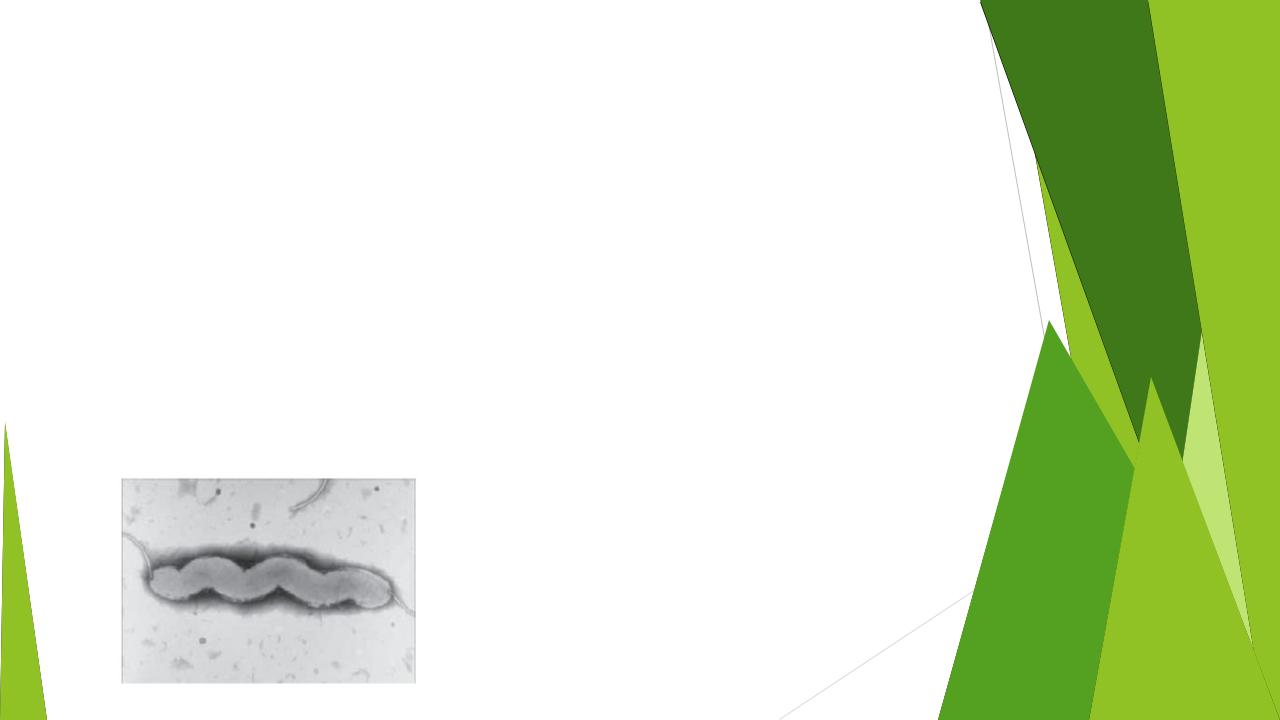
- •The causative agents of Campylobacteriosis
- •Plan
- •Campylobacteriosis is caused by Campylobacter bacteria (curved or spiral, motile, non–spore-forming, Gram-negative rods).
- •Campylobacter jejuni
- •C. jejuni can also cause a latent autoimmune effect on the nerves of
- •Campylobacter lari
- •Campylobacter upsaliensis
- •Campylobacter coli
- •https://en.wikipedia.org/wiki/Campylobacteriosis
- •Thank you for attention!!!

The causative agents of Campylobacteriosis

Plan
Campylobacter jejuni
Campylobacter lari
Campylobacter upsaliensis
Campylobacter coli

Campylobacteriosis is caused by Campylobacter bacteria (curved or spiral, motile, non–spore-forming, Gram-negative rods). The disease is usually caused by C. jejuni, a spiral and comma shaped bacterium normally found in cattle, swine, and birds, where it is nonpathogenic, but the illness can also be caused by C. coli (also found in cattle, swine, and birds), C. upsaliensis (found in cats and dogs) and C. lari (present in seabirds in particular).

Campylobacter jejuni
Campylobacters are bacteria that are a major cause of diarrhoeal illness in humans and are generally regarded as the most common bacterial cause of gastroenteritis worldwide. In developed and developing countries, they cause more cases of diarrhoea than, for example,
foodborne Salmonella bacteria. In developing countries, Campylobacter infections in children under the age of two years are especially frequent, sometimes resulting in death. In almost all developed countries, the incidence of human campylobacter infections has been steadily increasing for several years

C. jejuni can also cause a latent autoimmune effect on the nerves of the legs, which is usually seen several weeks after a surgical procedure of the abdomen. The effect is known as an acute idiopathic demyelinating polyneuropathy (AIDP), i.e. Guillain–Barré syndrome, in which one sees symptoms of ascending paralysis, dysaesthesias usually below the waist, and, in the later stages, respiratory failure.
Some strains of C jejuni produce a cholera-like enterotoxin, which is important in the watery diarrhea observed in infections. The organism produces diffuse, bloody, edematous, and exudative enteritis. In a small number of cases, the infection may be associated with hemolytic uremic syndrome and thrombotic thrombocytopenic purpura through a poorly understood mechanism.

Campylobacter lari
Campylobacter
lari (formerly Campylobacter laridis[1]) is a species of nalidixic acid-resistant, thermophilic, microaerophilic bacteria first isolated from human faeces. It shows anaerobic growth in the presence of trimethylamine N-oxide hydrochloride. Its type strain is NCTC 11352. It is commonly found in sea gulls. In humans, it has been involved in cases of enteritis,[4] severe abdominal pain and terminal bacteremia.[5][6]

Campylobacter upsaliensis
Campylobacter upsaliensis is a bacterial species of campylobacter[2] It can be found in cats and dogs.[3]
Campylobacter upsaliensis is named after Uppsala, Sweden, where it was first discovered.
Campylobacter upsaliensis can cause campylobacteriosis, which is, however, mostly caused by Campylobacter jejuni, a spiral and comma shaped bacterium normally found in cattle, swine, and birds, where it is non-pathogenic.[4]

Campylobacter coli
Campylobacter coli is a Gram-negative, microaerophilic, nonendospore -forming, S-shaped bacterial species within genus
Campylobacter.[1]
At least a dozen species
of Campylobacter have been implicated in human disease (campylobacteriosis), with C. jejuni and C. coli the most common. In humans, 85% to 95% of infections by
the Campylobacter species involve C. jejuni, while C. coli is involved in a majority of the other cases.[1] The bacterium is also found in cattle, swine, and birds. Similar to the C. jejuni, C. coli has the ability to cause enteritis with symptoms such as abdominal pain, diarrhea, bloody stool, and fever. These symptoms are caused, in part, by a secreted cytolethal distending toxin.[2] A variety of antibiotics have been found to be effective against the bacterium, including but not limited to chloramphenicol, nitofurantoin, and tetracycline.[3] Emerging new strains were reported to be resistant to fluoroquinolones, macrolides, trimethoprim, beta lactams, tetracycline, quinolone, and kanamycin.[3]

https://en.wikipedia.org/wiki/Campylobacteriosis
http://allcountries.org/health/campylobacter.html
http://journals.plos.org/plosgenetics/article?id=10.1371/journal.pge n.1000203
http://aac.asm.org/content/44/2/267.full
http://allcountries.org/health/campylobacter.html

